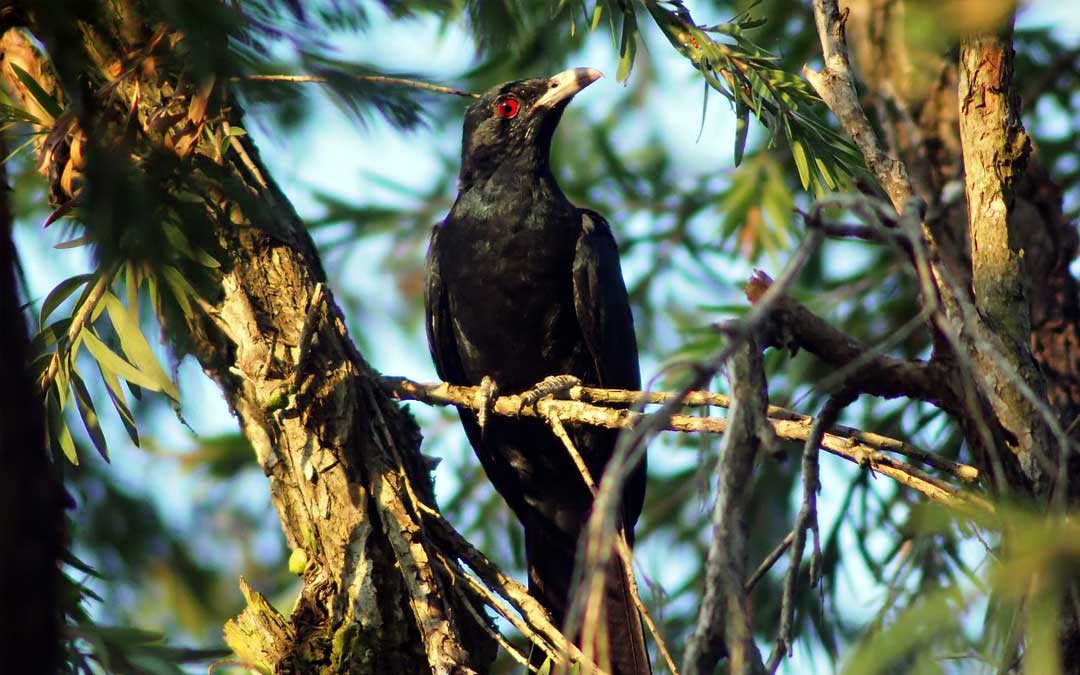The ‘devil bird’ has arrived

In the mid-2010s when I lived in Indonesia, I learnt the distinctive call of the Eastern Koel (Eudynamys orientalis). The Eastern Koel (also sometimes known as the Common or Pacific Koel) migrates from eastern Indonesia and Papua New Guinea to Australia’s north-eastern states to breed. The rainforest birds were extremely rarely spotted in Victoria. However, over the last decade or so it has become commonly seen in the suburbs of Melbourne – including around Macleod. This migration further south is thought to be at least partly because of climate change.
Named for the male’s nighttime call for a mate (‘kooo-el’), the southward advancement of Eastern Koels is causing problems for many of our local bird species (and for those of us not used to hearing them at 4 am).
The male Eastern Koel usually arrives before the females usually in September or October. Females are mottled brown and feature a red eye. The males are more easily identifiable with glossy black feathers and a red eye. You might think that’s why this type of cuckoo is known as the devil bird: but that’s only part of the reason.
The other reason it’s referred to as the ‘devil bird’ is because Eastern Koels are what are known as ‘brood parasites’. The females can time when they lay their egg, so she waits until another bird species has created a nest and is about to lay their eggs. She then sneaks in and lays hers in their nest. Eastern Koels seem to particularly target Red Wattlebird and Magpie Lark nests.
The host bird doesn’t realise what is going on and provides the Eastern Koel hatchling with food. It out-competes the other hatchlings for food before kicking them out of the nest. The none-the-wiser host birds continue to raise it. Once it’s grown big enough, the young Eastern Koel fledgling leaves the nest and migrates north in early autumn to spend its winter in warmer areas.
Like Noisy Miners, Rainbow Lorikeets and Wattlebirds, Eastern Koels are native birds that have adapted well to live in urban areas. They eat fruit – so they have plenty of food to choose from in our urban gardens – and there are plenty of host bird nests to lay in (as both Magpie Larks and Red Wattlebirds have also adapted well to life in urban areas). In the rainforest pythons and lace monitors are natural predators, but in Melbourne neither are present.
If you want to make your backyard less desirable to Eastern Koels, you can net your fruit trees and remove fruiting ornamental shrubs and trees that are not locally native including Cotoneaster, Sweet Pittostrum and Bluebell Creeper. You can also create a denser understorey using indigenous plants to encourage the little indigenous birds including Silvereyes, Eastern Spinebills, Fairy Wrens and Grey Fantails.
Written by Jen Willis
